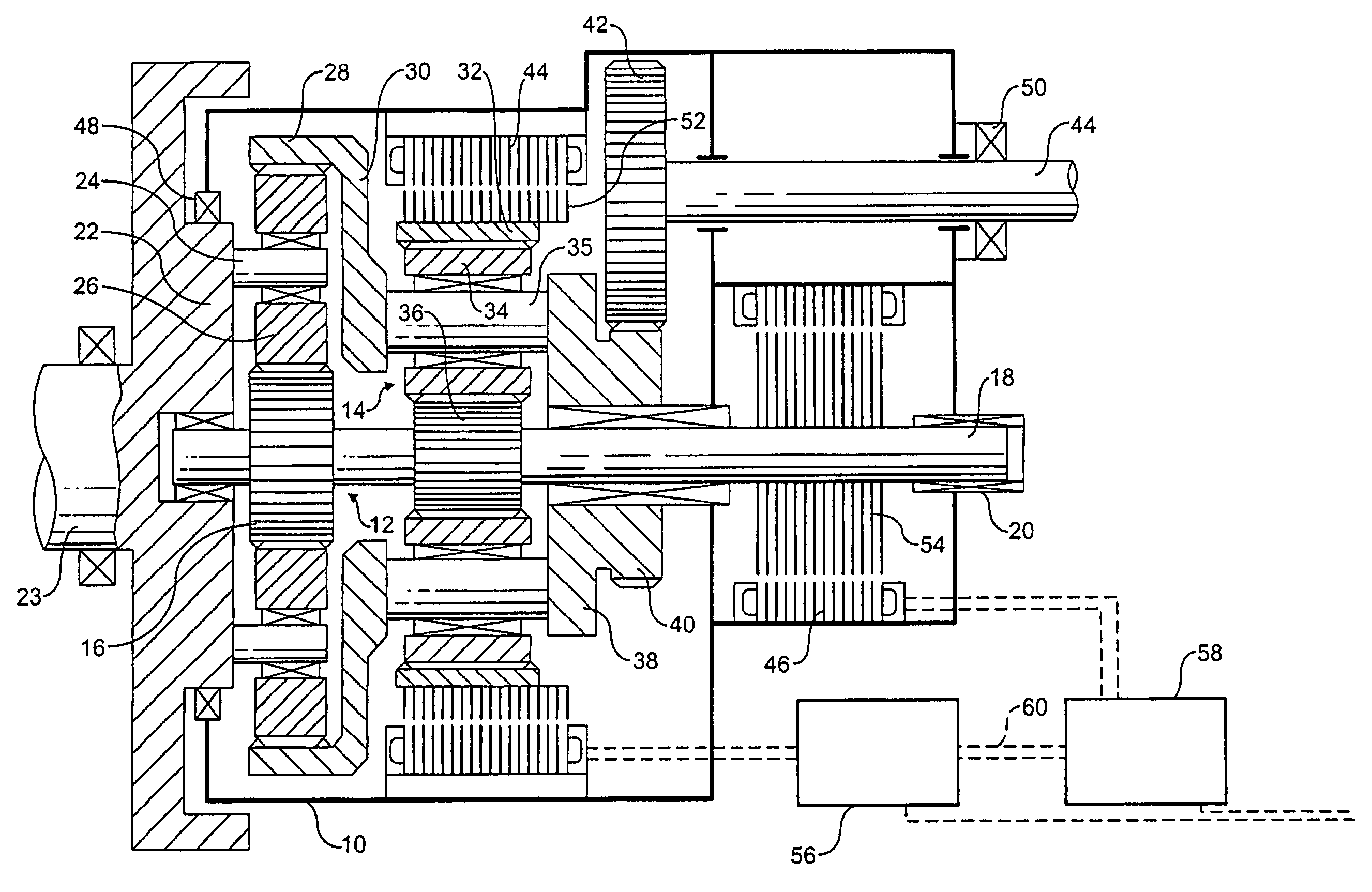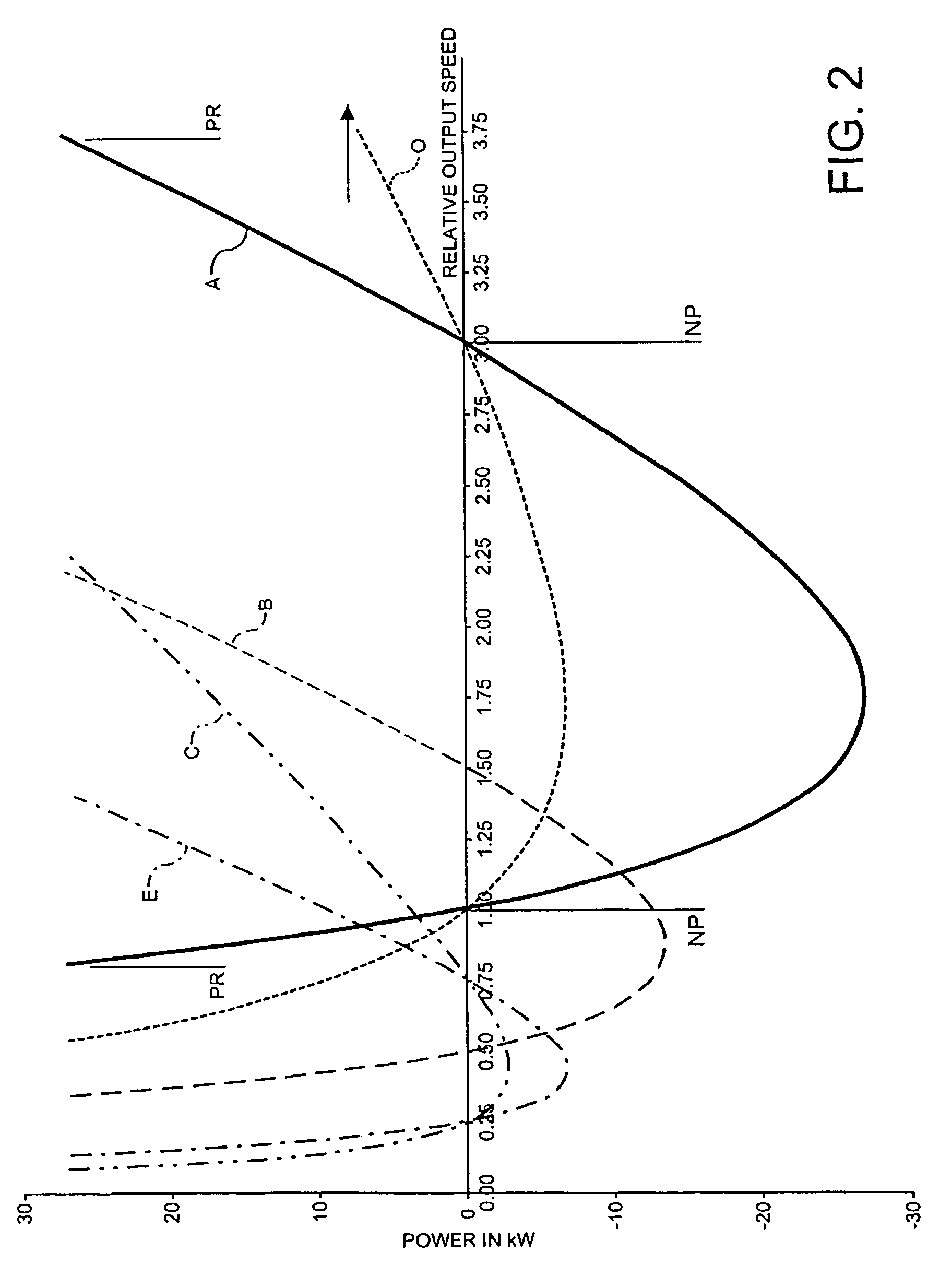Automotive vehicle transmission systems
a transmission system and vehicle technology, applied in the direction of engine-driven generator propulsion, process and machine control, electric devices, etc., can solve the problems of increasing the number of components and overall complexity, increasing mechanical complexity, and having to change transmission oil relatively frequently, so as to avoid inefficiency
- Summary
- Abstract
- Description
- Claims
- Application Information
AI Technical Summary
Benefits of technology
Problems solved by technology
Method used
Image
Examples
Embodiment Construction
[0028]The transmission shown in FIG. 1 comprises an outer housing 10 accommodating two epicyclic gearsets 12 and 14. The first gearset 12 comprises a first sunwheel 16, which is fixedly carried by a shaft 18 which is mounted to rotate with respect to the housing 10 by bearings 20. A first carrier 22, which constitutes a flywheel and is connected to an input shaft 23 to the transmission carries a number, in this case three, of equispaced shafts 24, which carry respective first planet wheels 26. The first planet wheels 26 are in mesh with the first sunwheel 16 and with an internally toothed first annulus 28.
[0029]The first annulus 28 is connected via a radial flange 30 to shafts 35, of which there are three, which carry respective second planet wheels 34 and are connected to a second carrier 38. The planet wheels 34 are in mesh with internal toothing on the second annulus 32 and in mesh with a second sunwheel 36 fixedly carried by the shaft 18. The second carrier 38 includes an extern...
PUM
 Login to View More
Login to View More Abstract
Description
Claims
Application Information
 Login to View More
Login to View More - R&D
- Intellectual Property
- Life Sciences
- Materials
- Tech Scout
- Unparalleled Data Quality
- Higher Quality Content
- 60% Fewer Hallucinations
Browse by: Latest US Patents, China's latest patents, Technical Efficacy Thesaurus, Application Domain, Technology Topic, Popular Technical Reports.
© 2025 PatSnap. All rights reserved.Legal|Privacy policy|Modern Slavery Act Transparency Statement|Sitemap|About US| Contact US: help@patsnap.com



